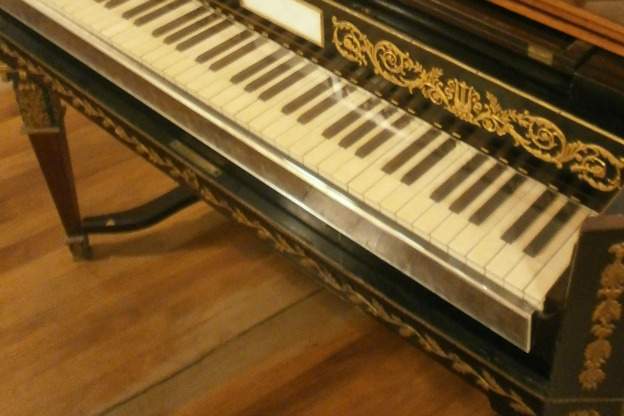
When asked to name a famous Polish pianist-composer before Chopin but after Haydn, how many would come up with the name Franciszek Lessel. “Say who” you may say?
Many of Lessel's works were never published and others lost, so the general populace can’t be blamed for not having Lessel’s name on the tip of the tongue! Luckily, the Polish pianist Dorota Cybulska-Amsler has just released a CD of several of Lessel’s works for solo piano.
A Viennese Fortepiano
Cybulska-Amsler recorded Lessel’s music on a fortepiano made in 1981 by Christopher Clarke. The instrument is a copy of an original Johann Fritz fortepiano, a turn of the century Viennese builder. Viennese fortepianos were characterized by their lighter touch. The sound produced by hammers covered with leather produce is softer and less direct certainly than a modern Steinway, but even different still from English pianos of the time. And in comparison to modern pianos, Fritz’s came with a few more bells and whistles…quite literally…besides pedals to dampen or sustain a sound, his instrument is equipped with an extra cymbal pedal to make the sound of bells ringing as well as a knee-operated lever for a so-called ‘bassoon register.’ While Cybulska-Amsler doesn’t make use of all the curiosities of the fortepiano, she does take advantage of the instrument's articulate and transparent sound.
Lessel, Haydn, and Chopin
Born in Warsaw in 1780, Lessel moved to Vienna and studied with Haydn as a young twenty-something. Lessel dedicated his Op.2 works to his teacher, and you can surely hear Haydn’s influence in this F major piece. But most of Lessel’s compositions fall solidly at the dawn of the 19th century when Romantic intent was showing classicism the door.
Lessel’s romanticism is most evident in his two fantasias that bookend this recording. His e minor fantasia composed in 1813 is a 17 minute single movement sprawl of themes and motives and keys at once turbulent, then sweet, then passionate, in a style that very much looks forward to Chopin. The Fantasia’s dedicatee was Cecylia Beydale, who anecdotally was Lessel's lover until the couple discovered they were related.
Like Chopin, much of Lessel’s music exhibits elements of nationalism often making rhythmic or melodic references to folk song and dance. An example is heard on the second track of this recording, Lessel’s variation on a popular Ukranian folksong.
Warsaw
Besides the piano, Lessel composed symphonic works for orchestra, concertos, sacred music, and a fair bit of wind and string chamber music, much of while still living in Vienna. And despite a budding career there, when Haydn died in 1809, Lessel moved back home to Warsaw. After that, his composing seems to have slowed down as Lessel started working in various other fields to make a living. He was well-regarded as a virtuoso glass harmonica player, and when he died in 1838, Lessel was serving as a school superintendent.
In the shadows of Papa Haydn on one side and the great Chopin on the other, this man in the middle gets overlooked. But Lessel’s compositions are worth hearing, as are Dorota Cybulska-Amsler’s performances of them.









